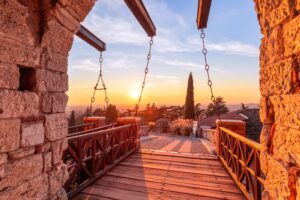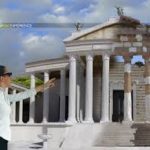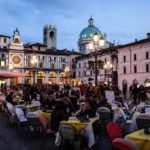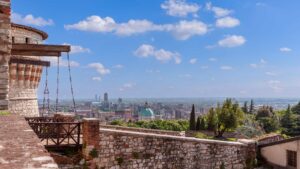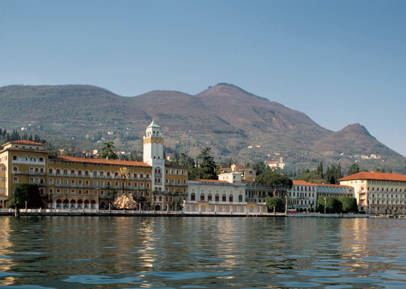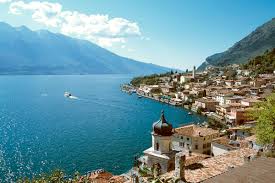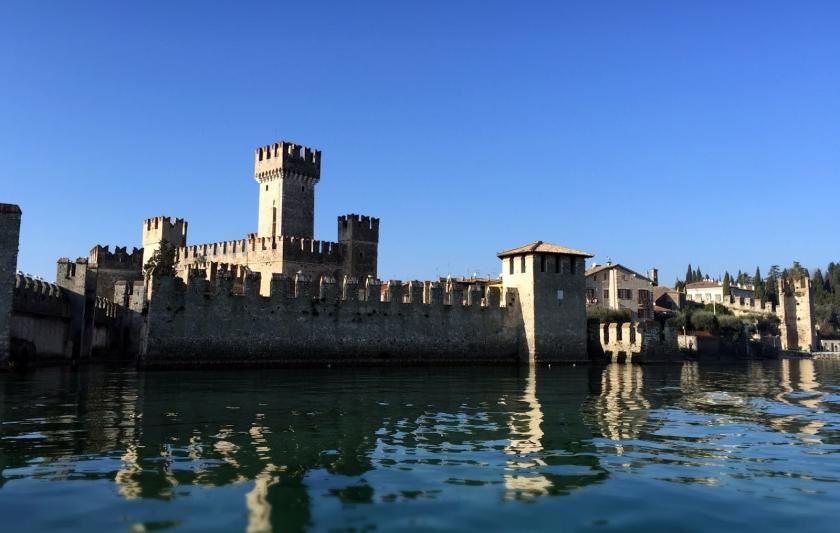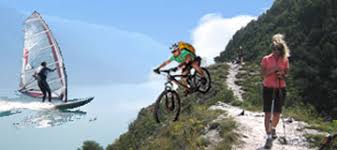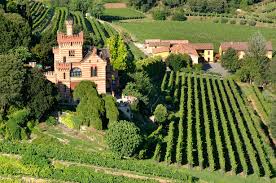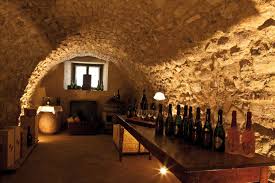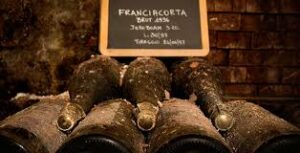Historic Brescia – Brixia
Passion for motors and competitions
A step into the history: from the origins under the Roman empire to Modern Age, through the Middle age and Renaissance.
Brescia has a passion for motors and competitions: ever since 1800 this passion has given life to one of the most famous car race in the world.
Historic Brescia
Here you will finde the most important information regarding the visit of Brescia City and sorroundings.
Please check VISITOR PROGRAM include in the Registration Fee
What to see in Brescia: our map!
The tour starts at the centre c.so Zanardelli, then moves ( towards the east through c.so Palestro and walking north in via Gramsci), in p.zza Vittoria.
It continues in the renaissance p.zza Loggia (just north of p.zza Vittoria) and goes on to p.zza Paul VI (passing eastwards under the astronomical clock -via Beretta), to visit the Broletto and the cathedrals.
Then east towards via Querini-Cattaneo we arrive in p.zza Labus and to the north in p.zza del Foro, to visit the Roman monuments of Brixia.
Continuing east to the end of via Musei, you will find the monastery of S. Giulia.
The tour ends with a visit to the castle of Brescia. After reaching the hill and going north towards the hill Cidneo to via Brigida Avogadro (that you meet at the end of via Musei).
What to see in Brescia 1: Corso Zanardelli is a well known place in Brescia: where citizens of Brescia meet to casually stroll under the porches built on the north side (and which continue in via Dieci Giornate).
At the centre of the arcade is the Grande Theatre. It originates from the meeting rooms of the Erring Academy which opened in 1634.
The first theatre was built in 1664. The current one was built in 1810 by the milanese Luigi Cagnola and the furniture was rearranged in 1862. In 1761 Antonio Marchetti designed the last room of the Erring Academy: in splendid Rococo decorated with frescoes by Pietro Scalvini.
Pride of the city the Grande was inaugurated in 1904 The success of “Butterfly” of Puccini after the fischi della Scala of Milan.
What to see in Brescia 2: Between 1929 and 1937, was the demolition of the old city, you have the rationalism and pretentious piazza della Vittoria (Victory Square).
Marcello Piacentini, is the creator that suggests the plan of the “”L”” shape which comes from of the venezian piazza San Marco. In the on the corner Up the bell tower of the former INA the National Insurance Institute, autocratically called “multi storey building”, residential buildings in reinforced concrete clad in brick that back then were in Italian record as the first skyscraper that was almost 60 metres high.
Protagnist on the north side of the square is the “Regie Poste e Telegrafi” (royal post and telegraph) with the high porch covered in a two tone marble band that protects the two tone glazed wall behind.
On the east side in front of the tower stands the tower of the Revolution conceived as a triumphal arch. It underlines the street towards piazza Paolo VIin fact creates a telescope optical axis with the entrance to the south aisle of the new cathedral (Duomo Nuovo).
The tower was decorated with bronze bas-relief of Mussolini on horseback Romolo Romanelli (lost or destroyed). Near the tower of Revolution the valuable Arengo ( a platform for speakers)) of Antonio Maraini,nine bas-relief on the history of the city Off centre in the square, is a fountain with a large statue from the fascist era, by Arturo Dazzi: a haughty nude man which is seven metres tall. The fountain has been removed.
Destroyed in fact (they say) during the bombing the terracotta bas-relief dipicting the annuciation by Arturo martini that decorated the porch of the tower.
What to see in Brescia 3: On the south side of the renaissance Square of the Loggia, there are buildings that run from the west to the east of the prisons of Monte vecchio di Pietà ( old mercy mountain) and of Monte nuovo di Pietà ( new mercy mountain).
The austere curtain is in white marble, which is revived from Botticino, between the said buildings, prisons and Monte Vecchio di Pietà are the subject of marble in versicoloured.
These buildings are enhanced by the inclusion in the masonry of ancient Roman tombstones, a witness to the classical roots of Brescia therefore exposed according to the citizens wishes to have for public use. This in fact is the foundation of the first Italian lapidary museum.
The west side of the square is occupied by the Venezian dal venezianeggiante palace of the Loggia, headquarters of the municipal authority whose foundation stone was laid in 1492. It consists of a porch on the ground floor, a hall on the first floor covered by a dome. It’s clear that there is the involvement of two great architects who participated in the construction : of Sansovino in the frieze and above the balustrade crowning ; Palladio in the dome like the hull of a capsized ship.
The current is a restoration of the early ‘900, after a fire that in 1575 destroyed the original dome with the underlying work of Tiziano. In front of the Loggia stands the clock tower where the bell is rung by two automata, popularly called“i macc de le ure” (the hourly dafties) .Underlying is the astronomical clock where you can read the sun’s movements , the constellations and the phases of the moon.
What to see in Brescia 4: The monumental buildings are aligned along the east of the square.
Starting from the north , the first building that we find is the medieval Broletto, the headquarters of the municipal authority in the Middle Ages, built in the thirteenth century. The building is “a corte interna”: four buildings that enclose a courtyard.
The oldest artefact is the tower of Pegol, used to summon the citizens. In the Broletto, is still within the government and civil authorities , there is a mixture of styles evolved from the Romans to the Gothics, to Renaissance until the nineteenth century.
Heading south you will come across the imposing new Cathedral, built from 1604 to 1825. In the nineteenth century the dome was celebrated as the third largest in Italy. Inside there are works of Romanino, Moretto and the monument of Paul VI by Scorzelli.
Next to the new Cathedral we find the old Cathedral in the Romanesque style which unfolds in a circular plan and has been well preserved. It consists of an ambulatory that surrounds a circular pit below, covered by a large dome enclosed in a lantern. Within there are fine works of Moretto.
In the crape of the Holy crosses is the treasure of the Holy crosses : a relic of the Holy Cross with medieval and Renaissance reliquaries and perhaps the only Carroccio cross that has ended with us. The treasure is guarded by the company of the holy crosses that has its origins in the Middle Ages.
What to see in Brescia 5: A visit to the Roman ruins of copious “Brixia” (the ancient name of Brescia),starts in the little square Labus (south of piazza Foro), where the remains of the Basilica are, the building which acts as a court and is closed in the southern part of piazza del Foro (in ancient times larger than the present).
On the north side of piazza Foro you can see what remains of the “Capitolium” ( capitol) three temple classrooms dedicated to Jupiter, Juno and Minerva. Which was founded by Emperor Vespasian in 73 d.C. (as stated on the pediment of the porch).
Under the Capitolium temple, are the remains of the Temple of Publicans’ age, which has given us a series of frescoes from Roman times, very well preserved, among the most important in northern Italy.
To the east the capitolium meets the Roman Theatre, of which remains a visible part of the auditorium. Which could hold about 15.000 viewers.
What to see in Brescia 6: Santa Giulia Monastery is located at the east of via Musei. It was established by the then Duke Desiderio (then the last King of the Lombards ) and his wife.
In 753 its prestige and economic prosperity were evident from the three churches that enclosed within its three cloisters. The oldest church is the Longobard one of San salvatore; the medieval one Santa Maria in solarium, was appointed to the guarding of the treasure of the monastery (remember the cross named after Desiderio) the sixteenth century Saint Guilia.Abbess of the monastery was the daughter of Desiderio, Anselperga.
Tradition has it that another daughter of the King repudiated by Charlemagne, unfortunate Ermengarde whose death was told by Manzoni in the Adelchi. This currently houses the towns museum.
What to see in Brescia 7: Called the”Falcon of Italy”, because of its position on the summit of the hill Cidneo.
The external castle walls are from the sixteenth century. Made with its bastions and ramparts and sloped walls to defend the place of modern firearms : the canons .
As you go up and enter inside the castle the age of the building gets older, up until the fourteenth century “Mastio Visconteo” ( Visconti keep), and the Mirabella tower , protected by a drawbridge. Under the Visconti Keep you can still see the remains of the ancient temple from when the Romans occupied the top of the hill.
The castle has witnessed bloody episodes :in 1512 the French soldiers led by Gaston de Foix went down to the city to conduct the awful lotting of Brescia; the same was repeated in 1849 when the Austrian General Haynau ( the hyena of Brescia), commanded the ferocious repression of the Risorgimento uprising during the Dieci Giornate that gave Brescia the title“Leonessa” d’Italia 8 the Lioness of Italy). Inside the castle you can visit two museums : The Luigi Marzoli Ancient Arms Museum, and the ( Visconti Keep) Mastio Visconteo, The museum of the Risorgimento housed in the Grande Miglio (corn store)
Garda Lake
At the foot of the Alps , in a prime location and favourable climate, Lake Garda offers the visitor a wonderful natural landscape and for the lovers of art and history there are real gems like the Italian Vittoriale, the Fondazione Ugo da Como in Lonato or the Caves of Catullo in Sirmione.
A few kilometres from the city of Brescia is one of the most famous and important lakes of Europe.
Lake Garda, a place of energy and sun, rich in culture and history: charming villages and historic spas, lively towns hosting festivals, concerts and events along the characteristic banks of the lake. important information regarding
the visit of Brescia City and sorroundings.
The Franciacorta Wine Region
Franciacorta is an area in the Province of Brescia which stretches to the west of the city, it consists of 19 towns.
It’s name, Franciacorta, takes us back in history in connection to the Corti Franche and after the arrival of the monks of Cluny, the territory benefited from free trade (curtes francae); the name “Franzacurta” appeared for the first
time in 1277.

Its recent history is linked to the exceptional Franciacorta, obtained from vineyards on the hills between the ancient and medieval towers and ancient sixteenth century residences, castles and pretty villages, manifestation of a land that has always been devoted to its viticulture.



